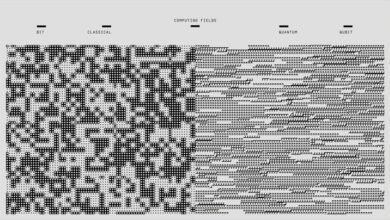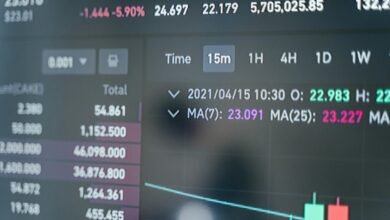Mastering Vendor Risk Management with Procurement

Vendor risk management is a vital part of any business strategy designed to protect businesses against the risks relating to third party suppliers and service providers. With more of the services provided by companies dependent on third party vendors, the need for efficient procurement process is rising. When procurement tool is integrated with a strong vendor risk management framework, organizations can safely tackle and minimize these risks. In this article we will discuss how this tool can help in vendor risk management and forms the basis to the long-term success and sustainability.
Understanding vendor risk management
Vendor risk managementis defining and controlling vendor relationships in such a way that the risks associated with this relationship are either very low or eliminated. These types of vendor risks include instability in financial performance by the vendor, noncompliance with industry standards or regulatory guidance, cyber risks against the vendor, failure in operational performance, and reputational damage. Vendor risk management serves to ensure that organizations have proper control over the quality and reliability of their vendors to ensure that their operations are not stalled while dealing with surprises.
Vendor risk management aims to establish a clear framework for vendor selection, vendor monitoring, and vendor evaluation as the partnership progresses. This enables business to make educated decisions as they engage with suppliers and minimize any potential risk before it gets out of hand. As supply chains grow more complex and interlinked, the value of a comprehensive, thoughtful vendor risk management strategy has grown in importance.
See also: Unlocking the Secrets of Jkaepds for Future Success
The role of a procurement tool
A procurement tool is one such software solution that automates and streamlines key processes in the procurement process-from vendor selection to PO issuance to payments. Procurement tools in today’s business are used to optimize procurement workflow, increase efficiency, and decrease operating costs. Procurement tools often include the functions of supplier management, contract management, spend analysis, and purchase order tracking.
However, a procurement tool can be a lifesaver when it comes to automating and improving the risk assessment process for vendor risk management. Integrating risk evaluation criteria into a procurement workflow allows businesses to select only qualified and vetted suppliers. It ameliorates risks associated with engaging with high-risk vendors and improves the overall risk management process. Procurement tools also help track supplier performance, monitor contract compliance and preclude that risk factors are regularly assessed over time.
Identifying and assessing vendor risks
The first stage of vendor risk management is to separate the different kinds of risks associated with prospective vendors. Such risks can be grouped into different categories of possibilities: financial, operational, cybersecurity, legal, and reputation risks. It is possible for financial risks like a vendor not being in good financial health financially or meeting payment terms on time. Disruptions cause the vendor to fail to deliver goods or services as agreed. Third party interactions can lead to cybersecurity risks such as the potential exposure of sensitive data due to exposure of sensitive data, while the legal risks can result from contract violations and noncompliance with regulatory requirements.
A procurement tool can significantly improve the risk identification and assessment process through its centralized data management and its automated risk scoring system. Omit organizations can thus evaluate vendors against predefined risk criteria to better determine those with the highest risk. Furthermore, procurement tools can collect vendor data from multiple sources, which allows for a richer assessment of possible risks.
Mitigating vendor risks through monitoring
After vendor risks are identified, it is important to have a solid monitoring system in place to monitor vendor performance over time. Vendor performance monitoring includes monitoring to ensure that suppliers continue to meet the agreed upon and contractual standards. Regular monitoring is very important to identifying early signs of potential issues, like delivery delays, quality issues and noncompliance with the regulations so that the business can bring the situation under control before things go out of hand.
Real time monitoring through procurement tools gives businesses an ability to track important KPIs like on-time delivery, service levels and product quality. If performance metrics drop below certain thresholds, these tools can generate automatic alerts for procurement teams to respond quickly to issues as they arise. Additionally, procurement tools can provide rich dashboards and reports to help decision-makers understand the health of their vendor relationship and enable data-driven risk mitigation strategies.
Enhancing vendor risk communication and collaboration
It is very crucial to communicate effectively as it is the best way you can manage vendor risks and maintain good relationships between you and the suppliers. Procurement toolimproves the communication by giving a single place where all interactions with the vendors are recorded, tracked, as well as monitored. This avoids a situation where different stakeholders within the organization or externally, have diverse perceptions and understanding of what is expected, by when and at what level of performance.
Last, procurement tools with built-in collaboration features, including document sharing, messaging systems, and task management, facilitate communication between procurement and vendors. These tools enable real-time collaboration so that any risk-related issues can be responded to in a timely and efficient manner. By enabling clear communication, risks are not only mitigated but the vendor relationship is strengthened, trusted and cooperative throughout the partnership.
Continuous improvement in vendor risk management
Whilst vendor risk management is not a one-time event, it is indeed a continuous process that requires constant focus and constant improvement. Its strategies and tools to manage vendor risks must evolve with changing market conditions, regulations, and business needs. Here is where procurement tools become adaptable. Businesses can assess how the current risk management strategies are working by continuously assessing their effectiveness, making improvements based on it, and adopting new measures to handle the new risks.
The procurement tools help organizations continuously improve by providing valuable data and analytics that assist in measuring the effectiveness of their risk management campaign. By looking at how supplier performance and risk levels change as aspects of aggregate risk and performance change over time, procurement teams can more effectively choose and negotiate with vendors. Furthermore, procurement tools can be interfaced with other risk management systems to aid in a holistic approach to the matter of enterprise-level risk management and supplier performance.
Conclusion
Finally, vendor risk management is a crucial function that organizations must focus on to avoid vendor disruptions and risks. A good procurement tool is paramount to improving this process as it helps automate the risk assessments and monitoring of vendor performance while facilitating better communication and collaboration with suppliers. With procurement tools, organizations can find, assess and mitigate vendor risks more effectively, ensuring their vendor relationships are both productive and secure. With the supply chain being so critical for businesses to survive and thrive, it is essential to have a good vendor risk management strategy in place and backed by a good enough procurement tool so that one can survive and grow in the long run.





